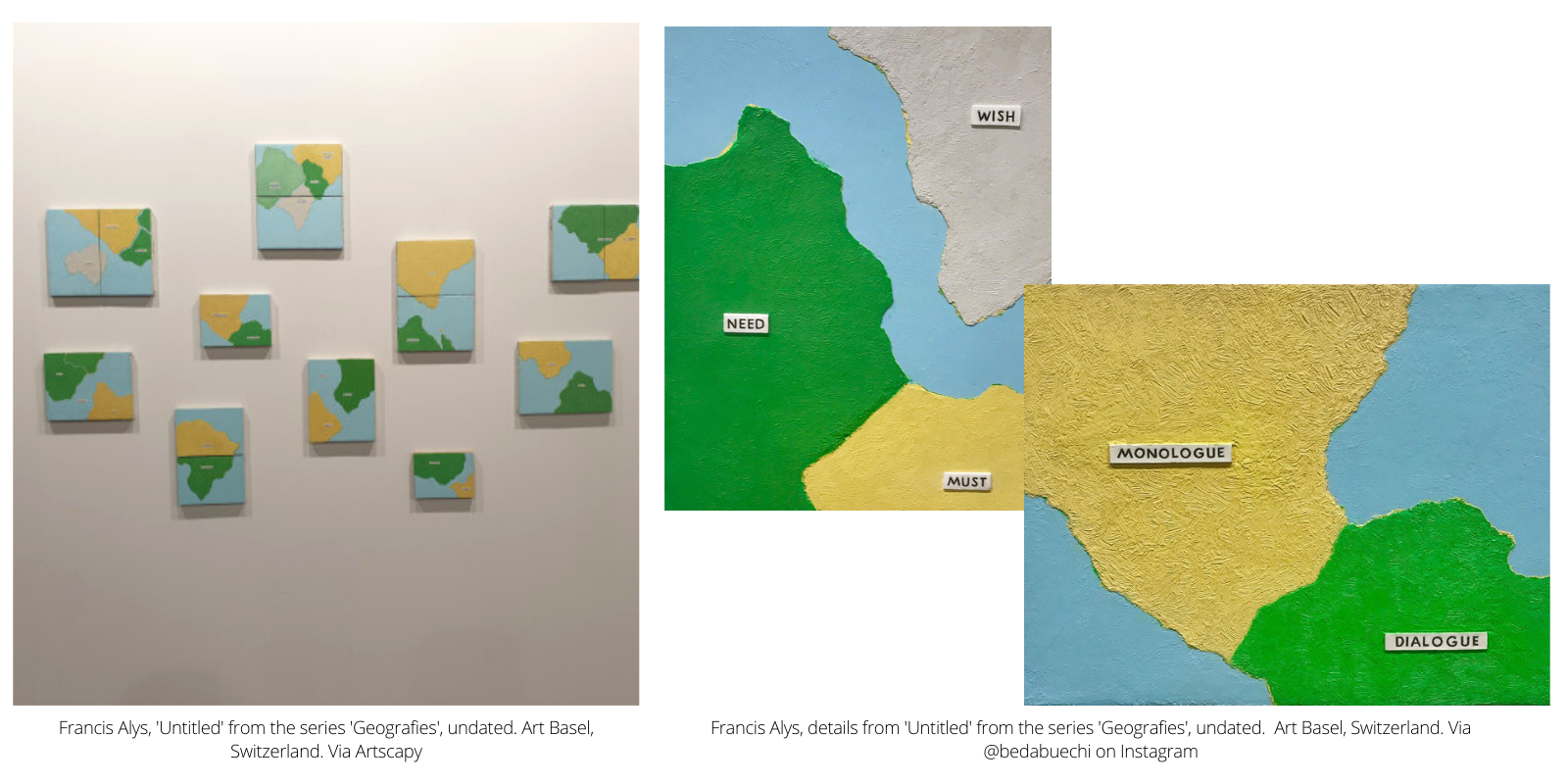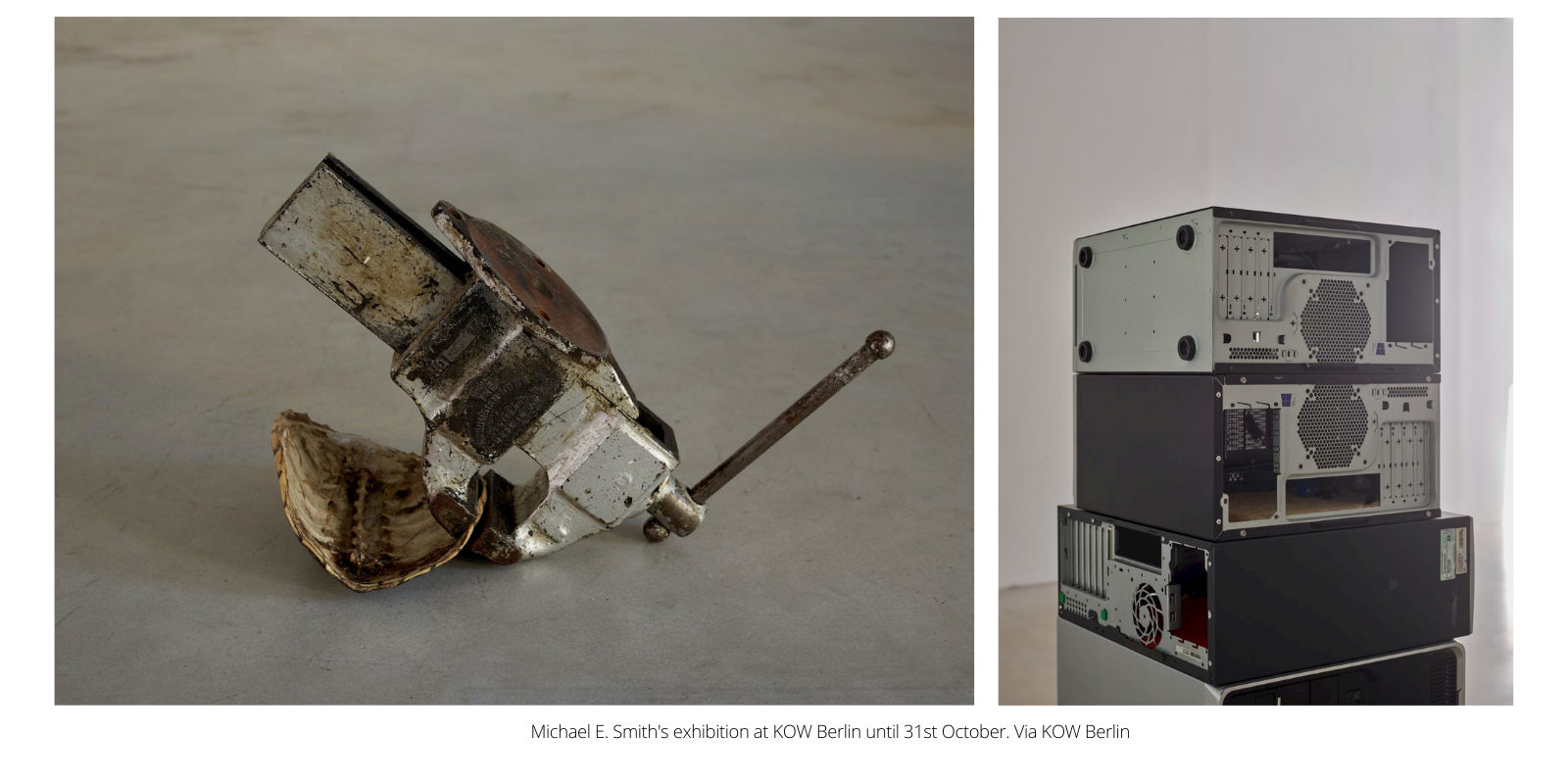Art Basel 2021
Art Basel, the art fair of all art fairs… After long uncertainty, cancelled exhibitions, and postponed shows, the biggest and most important art fair in the world returns. For a few days a year, this slumbering Swiss town becomes the melting pot and the ‘see-and-be-seen’ of the latest in art. The big convention centre explodes with art, and exhibitions crop up with everything from Kara Walker’s deeply introspective and intimate reflections on America to the many influences that Pissarro instilled in his fellow artist friends at the time. Even with several full days, it is impossible to take it all in. Our founder Emilia De-Satsio takes us through her highlights of the fair this year.
1) Hugo McCloud
Art Basel features several curated selections of artists and galleries throughout the fair, and this year was no different. Among them is the notable ‘Unlimited’ which features a special curation of artists and works that typically find their homes in art museums and public institutions across the world. Here you find great works - both in terms of size and impression - by world-famous artists, and my key pick from this year is the work ‘The Burden of Man: waiting to breathe’ by Hugo McCloud (New-York based, b.1980) (represented by Sean Kelly and Vielmetter Hall). This monumental work, stretching across seven meters, tells the story of emotionally impactful narratives of hope, loss, and the separations caused by borders and migration. It is a poignant reflection of how the pandemic has impacted us, marked by the oxygen tanks that remind us of the lives lost to lack of oxygen and endless waiting for ventilators.
2) Francis Alys

I have always been fascinated with Alys' practice and encountering his work at Art Basel was a pleasant surprise, making him one of my top picks from the fair. Belgian artist Francis Alys, who works and lives in Mexico, borrows on his professional roots in architecture to create art that explores geopolitics and the tensions of human experience and relationships. His practice overlaps photography and video, as well as painting and drawing to capture political events, and questions the impacts of what he refers to as ‘poetic acts’ of people. The work exhibited at Art Basel this year in particular, ‘Untitled’ from his ‘Geographies’ series, stood out to me because of its ‘simplicity’. Despite its uncomplex aesthetical approach, this work makes a mark through its powerful message as it reflects on a number of antagonistic words, such as ‘Open/Closed’, ‘Real/Imaginary’ and ‘Monologue/Dialogue’. Contrasting these relationships across geographic imagery made me question the separation that these words and ideas create, often arbitrarily, just as land borders create separations between humans.
3) Tomas Saraceno
Since I first discovered the complex world of Saraceno where art meets science, I have been fascinated by this artist’s ability to make connections between natural phenomena and humanity. His work incorporates large installations, interactive sculptures, and different scientific projects that wrap nature in art. The art is both political and ecological, in which Saraceno famously imagines a world free from pollution and the harmful impacts of capitalism. I’m particularly fascinated by a recent body of work, “Arachnophilia”, which already in its title reflects an interesting linkage between ‘the love for spiders’ and a metaphor for the construction of the World Wide Web. In this series, Saraceno lets spiders from different geographies ‘collaborate’ with each other to build enchanting webs. The messages of this work are multilayered, and invite us to explore our relationship with the natural world and appreciate the beauty it can create.
Emerging artists
1) Andriu Deplazes
This young Swiss artist captured my eyes in an instant at the Peter Kilchmann booth. The mythical, enchanting landscapes of his paintings, combined with social critiques, and wonderful art historical references make Deplazes someone to keep on your radar. His androgynic characters give room for men to explore their femininity, without being professedly feminist. This abstraction from gender helps us focus on the humanity of the motifs, rather than any implied gender roles. The works go on to explore identity, the sensation of being observed, and our ease or unease with ourselves and nudity. For Deplazes, nature is of great importance, and we recurrently see themes of nature and animals intertwined with the impact of humans. It is no wonder that such complex works have landed this artist in notable institutional collections and won him prestigious awards in his native Switzerland as well as abroad.
2) Simon Fujiwara
During a stay in Milano prior to Art Basel, I had the pleasure of seeing Fujiwara’s immersive solo exhibition “Who the Baer?” at the Prada Foundation. Entering a different world, in itself shaped as a big bear, visitors explore cartoon-character Baer on his discovery of what creates our concepts of identity and belonging. The journey takes us through explorations of gender, sexuality, culture, nationality and other aspects that influence us. Wrapped in a blanket of humour, the messages are delivered in a heartwarming way that makes a profound impact by mixing deep topics such as how gender roles and stereotypes shape us, with the childlike innocence of a cartoon. In my own art collection, one of the key themes that shape it is the notion of identity and how we perceive ourselves as humans. Strolling through the immensity of Art Basel, I was therefore delighted to find Esther Schipper's gallery that displayed works of Fujiwara. Among collages and drawings, I was able to re-connect with Baer and this creative way of mapping out our journey towards establishing identity.
3) Michael E. Smith

As my interest in art has developed over the years, I have found myself increasingly interested in conceptual art. To me, one of the most remarkable facets of art is how it can capture and convey impressions, concepts, and emotions in just a few objects, or indeed a 50x70 cm frame. The ability to do so much, to say so much, with so little leaves me in awe. So, discovering the poetics of Michael E. Smith (previously represented by Andrew Kreps Gallery and now with KOW Berlin) within his minimalist creations that juxtapose the natural with the manmade, meant I had found a new favourite to follow. By interrelating discarded items from humans with naturally found remains, such as the pictured vice and tortoise shell (on the left), we see a careful balance yet profound tension between the material culture created by man and the rapid loss of natural resources. The items remind me of the fragility of our existence, and function also as a sort of ‘archaeology of humanity.’
Art Basel is always a great place to establish and expand our art network as art collectors, but this year I truly felt how much everyone was craving to connect with other like-minded people. It is such a great place to be immersed in this creative space and talk about art trends, art discoveries and get inspiration for new acquisitions for an art collection. Art Basel 2021 was proof that Artscapy’s goal to connect like-minded individuals is not just a dream but is a necessity in the art world.









